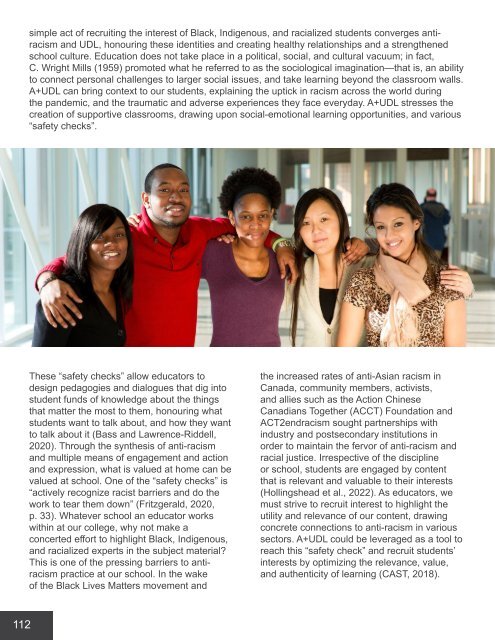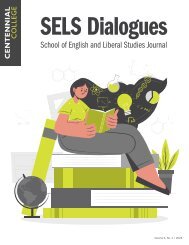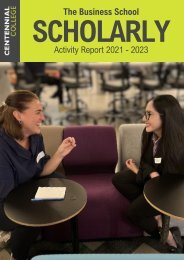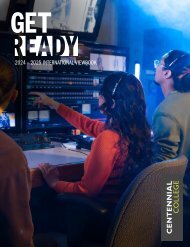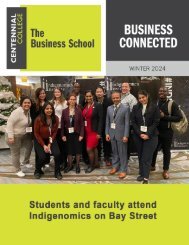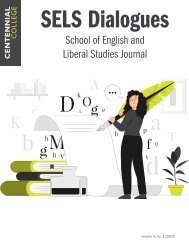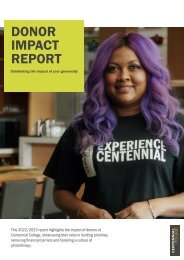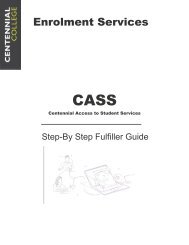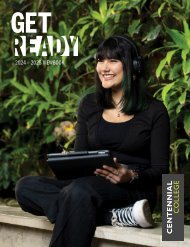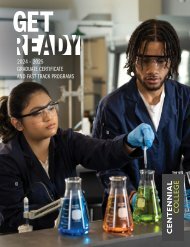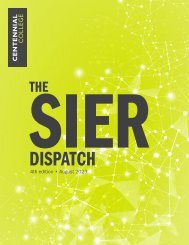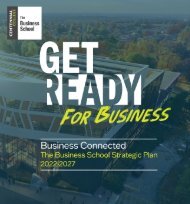The Teaching and Learning Innovation Digest - May 2023
Welcome to a truly special edition of the Teaching and Learning Innovation Digest! Our seventh annual academic publication has assumed an incredibly meaningful shape and form for a number of reasons. Not only did we receive an enthusiastic response with over 30 submissions via our institutional broadcast, but we also have consciously and intentionally embraced the principles of Universal Design for Learning by attempting to represent and celebrate the varied forms of expressions therein. From reflective essays, poetry, visual and performing arts, podcasts, video conversations to scholarly work, academic and applied research, news and updates, and interviews, this is truly a power-packed publication!
Welcome to a truly special edition of the Teaching and Learning Innovation Digest! Our seventh annual academic publication has assumed an incredibly meaningful shape and form for a number of reasons. Not only did we receive an enthusiastic response with over 30 submissions via our institutional broadcast, but we also have consciously and intentionally embraced the principles of Universal Design for Learning by attempting to represent and celebrate the varied forms of expressions therein. From reflective essays, poetry, visual and performing arts, podcasts, video conversations to scholarly work, academic and applied research, news and updates, and interviews, this is truly a power-packed publication!
You also want an ePaper? Increase the reach of your titles
YUMPU automatically turns print PDFs into web optimized ePapers that Google loves.
simple act of recruiting the interest of Black, Indigenous, <strong>and</strong> racialized students converges antiracism<br />
<strong>and</strong> UDL, honouring these identities <strong>and</strong> creating healthy relationships <strong>and</strong> a strengthened<br />
school culture. Education does not take place in a political, social, <strong>and</strong> cultural vacuum; in fact,<br />
C. Wright Mills (1959) promoted what he referred to as the sociological imagination—that is, an ability<br />
to connect personal challenges to larger social issues, <strong>and</strong> take learning beyond the classroom walls.<br />
A+UDL can bring context to our students, explaining the uptick in racism across the world during<br />
the p<strong>and</strong>emic, <strong>and</strong> the traumatic <strong>and</strong> adverse experiences they face everyday. A+UDL stresses the<br />
creation of supportive classrooms, drawing upon social-emotional learning opportunities, <strong>and</strong> various<br />
“safety checks”.<br />
Yet another “safety check” highlighted<br />
by Fritzgerald is the notion of behavioral<br />
expectations. Diverse behaviors can be<br />
perceived as deviant, abnormal, or bad when<br />
viewed only through the lens of those in<br />
power, creating additional barriers for Black,<br />
Indigenous, <strong>and</strong> racialized students<br />
(Apple, 2004). Even in the wake of the<br />
p<strong>and</strong>emic of racism, postsecondary institutions<br />
upheld racism by succumbing to these<br />
behavioral expectations <strong>and</strong> failing to act on<br />
creating <strong>and</strong> sustaining equitable <strong>and</strong> inclusive<br />
education environments. In fact, in 2021, Chief<br />
Commissioner of the Ontario Human Rights<br />
Commission, Ena Chadha, issued a letter to all<br />
Ontario colleges <strong>and</strong> universities concerning<br />
reports that Black, Indigenous, <strong>and</strong> racialized<br />
students were experiencing significant<br />
discrimination, xenophobia, <strong>and</strong> targeting on<br />
campuses <strong>and</strong> in academic environments<br />
across the province. Students lamented the<br />
manner in which school administrators <strong>and</strong><br />
institutional mechanisms h<strong>and</strong>led formal <strong>and</strong><br />
informal complaints, erecting barriers to their<br />
full participation on campuses, <strong>and</strong> perpetrating<br />
trauma <strong>and</strong> harm (Kaczorowski et al.,<br />
2022). Here, again, A+UDL could have been<br />
utilized to foster a greater sense of community<br />
on campus <strong>and</strong> in our teaching <strong>and</strong> learning<br />
interactions. Granted, Centennial College has<br />
made strides in this area through the creation<br />
of the Indigenous Strategic Framework <strong>and</strong> the<br />
Anti-Black Racism Task Force, but much more<br />
work can be done by adopting A+UDL <strong>and</strong><br />
asking questions such as:<br />
• Is there a real connection to the<br />
community?<br />
• Are Black, Indigenous, <strong>and</strong> racialized<br />
students welcome at our school or school<br />
system?<br />
• Has there been an effort to gain insights<br />
from Black, Indigenous, <strong>and</strong> racialized<br />
people to design your curricula, systems,<br />
supports, or resources?<br />
112<br />
<strong>The</strong>se “safety checks” allow educators to<br />
design pedagogies <strong>and</strong> dialogues that dig into<br />
student funds of knowledge about the things<br />
that matter the most to them, honouring what<br />
students want to talk about, <strong>and</strong> how they want<br />
to talk about it (Bass <strong>and</strong> Lawrence-Riddell,<br />
2020). Through the synthesis of anti-racism<br />
<strong>and</strong> multiple means of engagement <strong>and</strong> action<br />
<strong>and</strong> expression, what is valued at home can be<br />
valued at school. One of the “safety checks” is<br />
“actively recognize racist barriers <strong>and</strong> do the<br />
work to tear them down” (Fritzgerald, 2020,<br />
p. 33). Whatever school an educator works<br />
within at our college, why not make a<br />
concerted effort to highlight Black, Indigenous,<br />
<strong>and</strong> racialized experts in the subject material?<br />
This is one of the pressing barriers to antiracism<br />
practice at our school. In the wake<br />
of the Black Lives Matters movement <strong>and</strong><br />
the increased rates of anti-Asian racism in<br />
Canada, community members, activists,<br />
<strong>and</strong> allies such as the Action Chinese<br />
Canadians Together (ACCT) Foundation <strong>and</strong><br />
ACT2endracism sought partnerships with<br />
industry <strong>and</strong> postsecondary institutions in<br />
order to maintain the fervor of anti-racism <strong>and</strong><br />
racial justice. Irrespective of the discipline<br />
or school, students are engaged by content<br />
that is relevant <strong>and</strong> valuable to their interests<br />
(Hollingshead et al., 2022). As educators, we<br />
must strive to recruit interest to highlight the<br />
utility <strong>and</strong> relevance of our content, drawing<br />
concrete connections to anti-racism in various<br />
sectors. A+UDL could be leveraged as a tool to<br />
reach this “safety check” <strong>and</strong> recruit students’<br />
interests by optimizing the relevance, value,<br />
<strong>and</strong> authenticity of learning (CAST, 2018).<br />
Such questions should be at the forefront when we imagine a return to campus after everything our<br />
students have endured over the last two years. With coiled-spring alertness, we educators must pave<br />
the way for an equitable <strong>and</strong> empowered learning environment, becoming advocates for our students<br />
<strong>and</strong> their lived experiences. <strong>The</strong> learning outcomes, or how they are arrived at <strong>and</strong> measured, should<br />
entail a transformative experience for students, encouraging collaborative approaches to constructing<br />
expectations at the college—in other words, signaling to students that “they are safe here”, <strong>and</strong><br />
that they “have a voice here”. <strong>The</strong> aforementioned “safety checks” <strong>and</strong> the synthesis of A <strong>and</strong> UDL<br />
(A+UDL) can do just that.<br />
113


